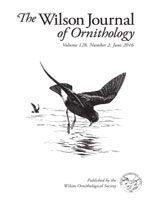The ability to forage successfully is intimately tied to survivorship of juveniles in many avian species, yet may take varying amounts of time to develop in young birds. We examined the development of foraging skills in juvenile Black Phoebes (Sayornis nigricans). Black Phoebes are insectivorous and forage by scanning for and then pursuing potential prey while in flight. We hypothesized that before they disperse, ~2 months after fledging, phoebes should forage as successfully and with the same mechanics as adults. Because foraging proficiency should affect time allocation, we also compared how juveniles and adults divided their time among foraging and other activities. We found that by 7 weeks of age, phoebes foraged as successfully as the adults; however, they spent more time flying and less time perched. In line with their gained efficiency, by around 6 weeks of age, scanning rates and foraging flight durations of juveniles were similar to adults. Overall, these results confirm that the complex foraging behaviors of Black Phoebes develop in juveniles in a relatively short time period. The development of proficient foraging abilities, however, appears to precede effective time allocation, which must occur sometime after independence or dispersal.
How to translate text using browser tools
30 June 2016
Foraging ontogeny in a suburban population of Black Phoebes (Sayornis nigricans)
Jessica Baker,
Elise D. Ferree
ACCESS THE FULL ARTICLE

The Wilson Journal of Ornithology
Vol. 128 • No. 2
June 2016
Vol. 128 • No. 2
June 2016
Black Phoebe
fledglings
flycatchers
foraging
ontogeny




